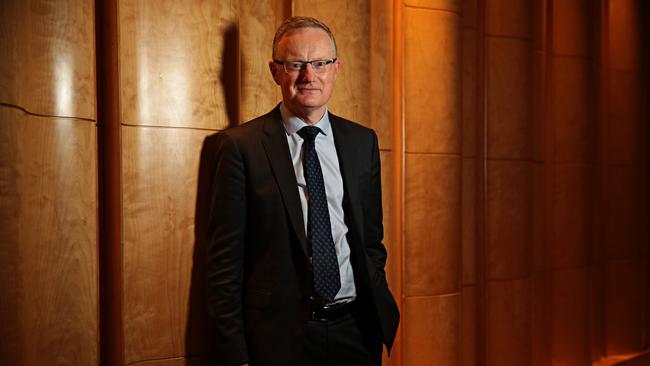No end in sight to low rates: Reserve
Interest rates could fall even lower and stay there for years, the Reserve Bank governor has warned, blaming globalisation.

Interest rates could fall even lower and stay there for years following a landmark speech by the Reserve Bank governor blaming globalisation and an unexpected surge in jobseekers for dragging inflation below the central bank’s target.
Following back-to-back cuts to the official cash rate that saw the government encourage first-home buyers back into the market, Philip Lowe yesterday revealed the RBA stood ready to trim the cash rate further — below 1 per cent — if inflation and growth remained weak.
“If demand growth is not sufficient, the board is prepared to provide additional support by easing monetary policy further,” he said, batting away criticism of the Reserve Bank’s 2-3 per cent inflation target. “It remains to be seen if future growth in demand will be sufficient to put pressure on the economy’s supply capacity and lift inflation in a reasonable timeframe.”
While Dr Lowe yesterday stood by the existing inflation target, Treasurer Josh Frydenberg has not yet signed off on the key monetary policy agreement between the government and the Reserve Bank that sets the inflation target within a band of 2-3 per cent. The Australian understands if there are any changes they will be “at the margins”.
Dr Lowe yesterday said central banks’ credibility in fighting inflation, and greater competition among workers for jobs and businesses for consumers in an increasingly digital and globalised world, had put a lid on wage and price growth.
The speech in Sydney came ahead of figures, due next week, expected to show inflation for the year to June remains well below the bottom of the RBA’s target range. The consumer price index rose 1.3 per cent over the year to March, while one of the RBA’s preferred measures of inflation, the trimmed mean, has been below 2 per cent for four years.
“The June numbers should show inflation rates sub-2 per cent for the 17th quarter out of the past 19,” CBA chief economist Michael Blythe said yesterday, pencilling in a rise in inflation to 1.6 per cent on the back of higher food prices stemming from the drought and a 10 per cent bounce in petrol prices.
Dr Lowe, weeks after meeting Mr Frydenberg in Melbourne to laud the economy’s “fundamental strength”, said criticism of the 23-year-old inflation target was “understandable”, but dismissed arguments to “shift the goalposts”.
“The Reserve Bank board is strongly committed to making sure we get there and continuing to deliver an average rate of inflation of between 2 and 3 per cent,” he said.
In 1993, the Reserve was among the first central banks in the world to introduce an inflation target, formalised at 2-3 per cent “on average, over time” in 1996. Now most central banks adjust an official interest rate to affect economic growth and inflation.
Mr Frydenberg yesterday said the Australian economy faced a number of challenges with “global growth remaining subdued”, according to the IMF’s latest update and the impact of severe drought and floods.
“Conscious of the economic challenges we face, we set out in the budget a pro-growth strategy with $158bn of tax cuts, our $100bn infrastructure plan and the creation of 80,000 apprenticeships,” he said. “This economic plan also includes restoring the nation’s finances by returning the budget to surplus for the first time in more than a decade.
“The combination of lower interest rates, tax cuts and investments in infrastructure and skills are all going to help strengthen the Australian economy.”
Respected RBA watcher Bill Evans this week flagged two further interest rate cuts this week, in November and February.
“We expect the path of the unemployment rate will be sufficiently contrary to the RBA’s plans that they will have appropriate justification to ease policy a little earlier,” the Westpac chief economist said.
Prices in financial markets suggest investors expect another rate cut this year, which would bring the official rate to 0.75 per cent and set off another confrontation between the government and the banks if the latter don’t pass on the full amount to borrowers.
Dr Lowe played down the impact on household debt of back-to-back cuts , suggesting the risk of another housing boom had “lessened”.
He said the unexpected jump in the participation rate since 2016 — the share of working-age people in or looking for work — had left the jobless rate, which crept up to 5.2 per cent this year, higher than it would otherwise be.”




To join the conversation, please log in. Don't have an account? Register
Join the conversation, you are commenting as Logout